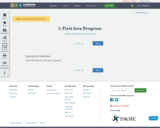
Let's start with our first Java program!
- Subject:
- Computer Science
- Material Type:
- Full Course
- Author:
- Saeid Samadidana
- Date Added:
- 08/29/2022

Let's start with our first Java program!
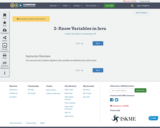
Our second set of videos explains how variable are defined and used in Java
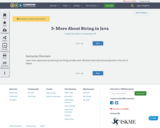
Learn more about Java by learning how String variable work. We learn basic text processing tools in this set of videos.
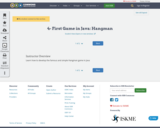
Learn how to develop the famous and simple Hangman game in Java
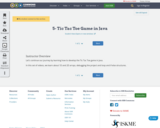
Let's continue our journey by learning how to develop the Tic Tac Toe game in Java.In this set of videos, we learn about 1D and 2D arrays, debugging the project and loop and if-else structures.
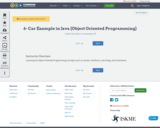
Learning the Object Oriented Programming concepts such as classes, interfaces, overriding, and inheritance.
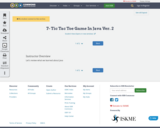
Let's review what we learned about Java

Using the planetarium program Stellarium, you will display the evening sky just after sunset for the date and location of your birthplace. You will determine the times of the sunrise, sunset, and moon rise on your birthday, note the phase of the moon, and observe planetary positions and visibility. ---------------------------------------Distant Nature: Astronomy Exercises 2016 by Stephen Tuttle under license "Creative Commons Attribution Non-Commercial Share Alike".

Welcome to Astronomy 1020 Lab 1! The Introduction to Stellarium Software lab will cover the installation, navigation, and use of Stellarium, the software which will be used to complete ASTR 1020 lab work.Stellarium [Copyright © 2004-2011 Fabien Chereau et al.]

This activity will focus on Kepler's Law which concerns planetary motion.---------------------------------------Distant Nature: Astronomy Exercises 2016 by Stephen Tuttle under license "Creative Commons Attribution Non-Commercial Share Alike".

Galileo, in 1612, demonstrated that the Sun rotates on its axis with a rotation period of approximately one month. Our star turns in a west-to-east direction, like the orbital motions of the planets. The Sun, however, is a gas and does not have to rotate rigidly, the way a solid body like Earth does. Modern observations show that the Sun’s rotation speed varies according to latitude; that is, it’s different as you go north or south of the Sun’s equator. Between 1826 and 1850, Heinrich Schwabe, a German pharmacist and amateur astronomer kept daily records of the number of sunspots. What he was looking for was a planet inside the orbit of Mercury, which he hoped to find by observing its dark silhouette as it passed between the Sun and Earth. Unfortunately, he failed to find the hoped-for planet, but his diligence paid off with an even more important discovery: the sunspot cycle. He found that the number of sunspots varied systematically, in cycles about a decade long. In this laboratory, you will engage in tracking the Sun like Galileo and Schwabe during a six-day cycle and then do a simple calculation of the rotational period of our sun.---------------------------------------Distant Nature: Astronomy Exercises 2016 by Stephen Tuttle under license "Creative Commons Attribution Non-Commercial Share Alike".

Lincoln, Abraham. 1858. "First Debate with Stephen A. Douglas." Excerpts of speech delivered at Ottawa, Illinois, August 21, 1858. https://www.nps.gov/liho/learn/historyculture/debate1.htm

Statement by Abraham Lincoln and Dan Stone on the Subject of Domestic Slavery March 3, 1837
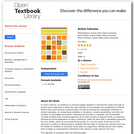
Active Calculus is different from most existing calculus texts in at least the following ways: the text is free for download by students and instructors in .pdf format; in the electronic format, graphics are in full color and there are live html links to java applets; the text is open source, and interested instructors can gain access to the original source files upon request; the style of the text requires students to be active learners — there are very few worked examples in the text, with there instead being 3-4 activities per section that engage students in connecting ideas, solving problems, and developing understanding of key calculus concepts; each section begins with motivating questions, a brief introduction, and a preview activity, all of which are designed to be read and completed prior to class; the exercises are few in number and challenging in nature.

Alexander Stephens' Pro-Slavery argument at the beginning of the Confederate States of America
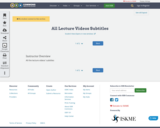
All the lecture videos' subtitles

This set of materials can be used to generate discussion amongst students that will connect material from the textbook to current events. These articles can be used for both in-person discussion or online discussion forums.

These PowerPoint slides can be paired with the American Government 3e textbook by Openstax for in-class sections of the course. They provide matierial from the textbook, as well as data from the most recent elections, public opinion polls, and pew research center publications from within the last few years. This material provides both the political history of our country, as well as some pertinent information from current events affecting our political landscape.
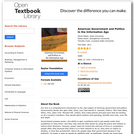
This text is a comprehensive introduction to the vital subject of American government and politics. Governments decide who gets what, when, how (See Harold D. Lasswell, Politics: Who Gets What, When, How, [New York: McGraw-Hill, 1936]); they make policies and pass laws that are binding on all a society’s members; they decide about taxation and spending, benefits and costs, even life and death.Governments possess power—the ability to gain compliance and to get people under their jurisdiction to obey them—and they may exercise their power by using the police and military to enforce their decisions. However, power need not involve the exercise of force or compulsion; people often obey because they think it is in their interest to do so, they have no reason to disobey, or they fear punishment. Above all, people obey their government because it has authority; its power is seen by people as rightfully held, as legitimate. People can grant their government legitimacy because they have been socialized to do so; because there are processes, such as elections, that enable them to choose and change their rulers; and because they believe that their governing institutions operate justly.Politics is the process by which leaders are selected and policy decisions are made and executed. It involves people and groups, both inside and outside of government, engaged in deliberation and debate, disagreement and conflict, cooperation and consensus, and power struggles.In covering American government and politics, this text introduces the intricacies of the Constitution, the complexities of federalism, the meanings of civil liberties, and the conflicts over civil rights;explains how people are socialized to politics, acquire and express opinions, and participate in political life; describes interest groups, political parties, and elections—the intermediaries that link people to government and politics; details the branches of government and how they operate; and shows how policies are made and affect people’s lives.

These course modules are meant to accompany the OpenStax Anatomy & Physiology textbook. Included within each subunit are both Articulate Rise 360 exported raw Web and SCORM 1.2 ZIP files. These files are to be Imported into a Learning Management System. Each module contains text and images from the OpenStax book, original text, openly licensed images from various sources, formative activities, and links to videos on public websites. The modules are free to use as needed. If modification is desired, please contact the author, and I will send you the Rise 360 source file.